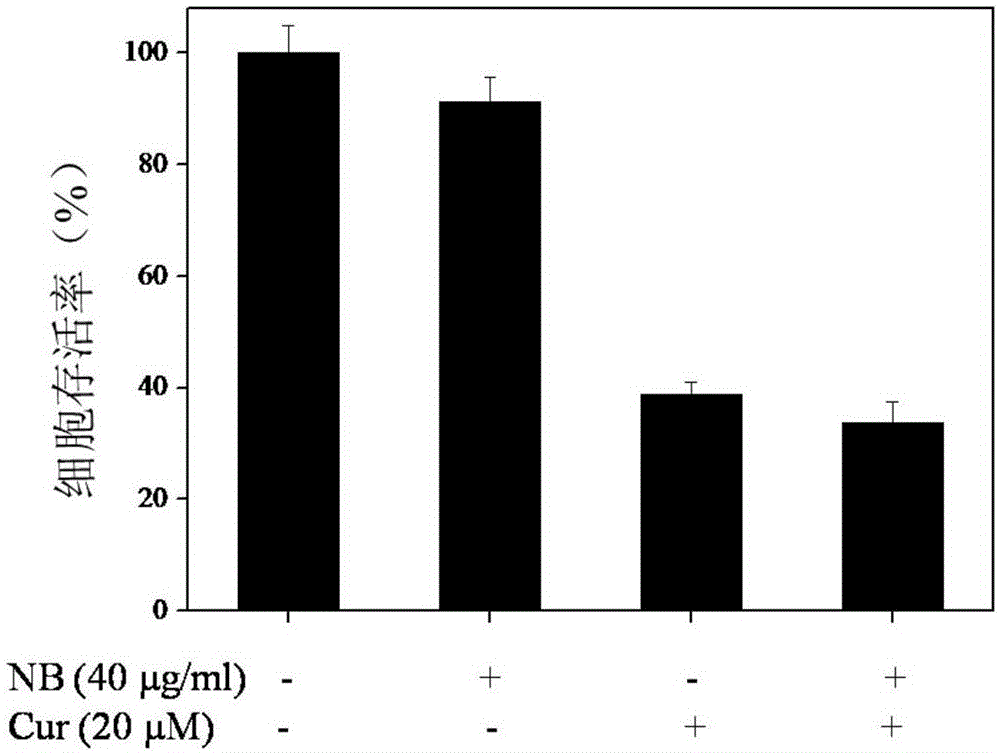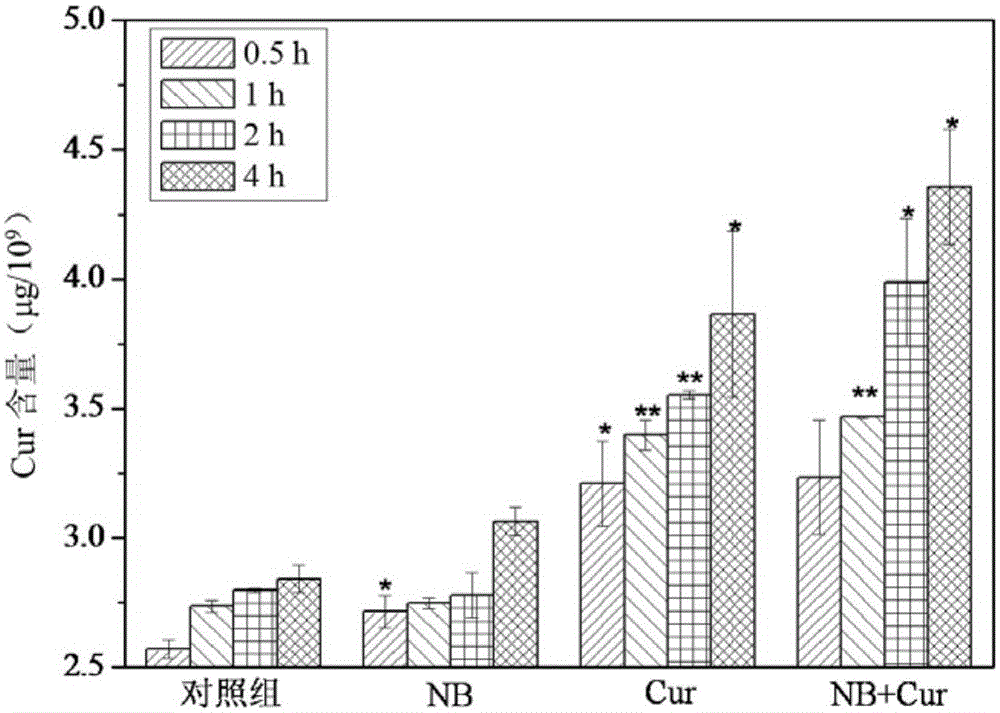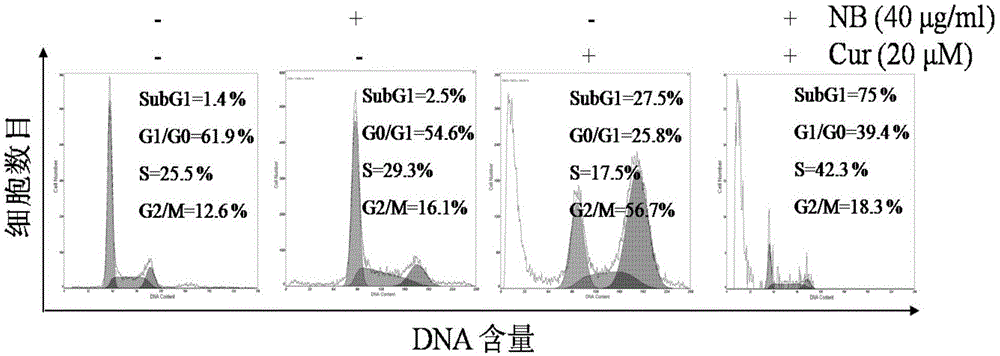Medicine for treating melanoma and preparation method of medicine
A melanoma and drug technology, applied in the field of medicine and biology, can solve the problems of affecting application, lack, and low absorption rate, and achieve the effect of low toxicity of normal human cells
- Summary
- Abstract
- Description
- Claims
- Application Information
AI Technical Summary
Problems solved by technology
Method used
Image
Examples
Embodiment 1
[0025] The D-borneol of the present embodiment (English name is naturalborneol, CAS accession number is 464-43-7, and molecular formula is C 10 h 17 OH, molecular weight is 154.24) concentration: 40 μ g / ml, curcumin concentration is 20 μ M.
[0026] 1. Anti-melanoma activity detection in vitro
[0027] (1) Experimental materials
[0028] The malignant melanoma cells A375 used in this experiment were purchased from ATCC in the United States; curcumin was purchased from Sigma; and dimethyl sulfoxide (DMSO), purchased from Sigma, USA; DMEM medium and trypsin, purchased from Invitrogen (Carlsbad, CA); 96-well plates, purchased from Corning, USA.
[0029] (2) Experimental method
[0030] A375 cells were cultured in DMEM medium containing 10% fetal bovine serum by volume. After the cells were cultured for 3 days, the growth status and cell density of the cells were observed. When the cells grew to 80%, the cells were subcultured. Transfer the cells digested with trypsin (conven...
Embodiment 2
[0062] The detection operation of embodiment 2 is basically the same as that of embodiment 1, except that the concentration of d-borneol in this embodiment is 40 μg / ml, and the concentration of curcumin is 80 μM.
[0063] The test results are as follows:
[0064] (1) Detection of anti-melanoma activity in vitro: the experimental results showed that, compared with Cur treatment alone, the cell survival rate decreased from 3.43±0.12% to 3.04±0.56% after combined treatment with NB and Cur. The experimental results showed that NB can increase curcumin (Cur) to inhibit the growth of A375 malignant melanoma cells.
[0065] (2) Detection of curcumin content in A375 cells: the experimental results showed that compared with the blank control group, the intracellular curcumin content of the NB group had no significant change after treatment, but the NB+Cur group significantly increased the intracellular Cur content and It is time dependent. The experimental results (Table 1) showed th...
Embodiment 3
[0078] The detection operation of embodiment 3 is basically the same as that of embodiment 1, except that the concentration of d-borneol in this embodiment is 20 μg / ml, and the concentration of curcumin is 40 μM.
[0079] (1) Detection of anti-melanoma activity in vitro: the experimental results showed that, compared with Cur treatment alone, the cell survival rate decreased after combined treatment with NB and Cur, from 21.49±1.60% to 19.85±0.54%, indicating that NB can improve Curcumin (Cur) inhibits the growth of A375 malignant melanoma cells.
[0080] (2) Detection of curcumin content in A375 cells: the experimental results (Table 5) showed that compared with the blank control group, the curcumin content in the cells of the NB group did not change significantly after treatment, but the NB+Cur group significantly increased the curcumin content in the cells. The content of Cur is time-dependent. Experimental results show that d-borneol significantly improves the absorption ...
PUM
 Login to View More
Login to View More Abstract
Description
Claims
Application Information
 Login to View More
Login to View More - R&D
- Intellectual Property
- Life Sciences
- Materials
- Tech Scout
- Unparalleled Data Quality
- Higher Quality Content
- 60% Fewer Hallucinations
Browse by: Latest US Patents, China's latest patents, Technical Efficacy Thesaurus, Application Domain, Technology Topic, Popular Technical Reports.
© 2025 PatSnap. All rights reserved.Legal|Privacy policy|Modern Slavery Act Transparency Statement|Sitemap|About US| Contact US: help@patsnap.com



